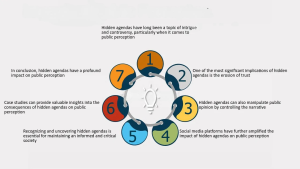The Controversial ‘Crack Pipe’ Article: Unpacking the Assumptions Behind the Firestorm
The uproar surrounding the ‘Crack Pipe’ article continues to escalate, cutting across various sectors and eliciting diverse opinions from all corners. This article, which seemingly advocated for the provision of crack pipes to drug users, stirred a tempest of controversy due to the underlying assumptions it made. Critics of the article argue that it inadvertently supported drug use by suggesting the government should provide tools for substance abuse. On the other hand, supporters claim it aimed to stimulate discussions on harm reduction strategies in managing drug addiction. The hullabaloo primarily revolves around the question of morality, social responsibility, and the ultimate role of government in managing substance abuse.
The article assumes that by providing clean pipes, the government might curb health risks associated with sharing used pipes, potentially reducing the spread of diseases like HIV. However, opponents dispute this, stating that such an approach might only serve to perpetuate drug use. This controversy underscores society’s struggle to reconcile the need to curb drug abuse with the realities of substance addiction, and the practical steps needed to address its devastating effects. It raises questions regarding public health policy, societal norms, and the fine line between enabling harmful behavior and implementing harm reduction strategies. It’s a debate that is far from over and continues to spark heated public discourse.

The Origins of the Viral Article
The concept of viral articles traces its roots back to the progressive growth of the internet and the rise of social media platforms. The term “viral” itself is borrowed from virology, where a virus spreads quickly and uncontrollably, a phenomenon similar to the rapid dissemination of content online. The first recognized viral article was arguably published in 1996, titled “Dancing Baby,” which was an animated 3D model that quickly spread across the internet, making its way into popular culture and television shows.
The advent of social media platforms such as Facebook, Twitter, and Instagram further fueled this trend, enabling the quick sharing and distribution of articles. The viral article phenomenon is primarily driven by the inherent human desire to share and disseminate information, whether for entertainment, awareness, or knowledge purposes. The concept of virality also evolved with the introduction of clickbait titles, which are designed to attract attention and encourage visitors to click on a link to a particular web page, thereby driving traffic and enabling rapid spread. The success of a viral article is typically measured in terms of the number of shares, likes, and comments it garners. Despite the criticisms regarding the quality and accuracy of viral articles, they have undeniably revolutionized the way information is shared and consumed in the digital age.
The Assumptions and Missteps
Assumptions and missteps are often intertwined, creating a complex web that can significantly affect an individual’s decision-making process and subsequent outcomes. Assumptions, by nature, are the beliefs or ideas that we perceive as facts without concrete evidence. They are often born from our experiences, cultural backgrounds, or personal biases, and while they may sometimes lead us to correct conclusions, they can also steer us towards serious missteps. Missteps, as the term suggests, represent the errors or mistakes we make, many times as a direct result of our unfounded assumptions.
A classic example of this dynamic can be seen in business, where entrepreneurs may assume that a product or service will be well received by a certain demographic, only to find that their target audience is not interested. This misstep can cost businesses not only financially, but also in terms of time and resources. It showcases how assumptions, if not validated or challenged, can lead to significant miscalculations and failures.
Similarly, in interpersonal relationships, assumptions about a person’s feelings or intentions can lead to miscommunication, misunderstandings, and conflicts. Without open, honest dialogue, one may assume they understand another’s perspective, only to make a misstep in handling a sensitive situation.
In the realm of scientific research, assumptions can lead to missteps in experimental designs or interpretation of results. A researcher may assume a certain outcome based on previous studies or prevailing theories, but this assumption could lead to overlooking other possible explanations or outcomes.
Therefore, it’s critical to be aware of the assumptions we hold and to consciously challenge them, seeking evidence and maintaining open-mindedness. Assumptions can be useful in providing a starting point or framework for understanding, but they should not be confused with verified facts. Recognizing and learning from our missteps can also be a powerful tool for growth and improvement. Ultimately, navigating the dynamic between assumptions and missteps requires a balance of confidence and humility, certainty and curiosity.

Analyzing the Reactions and Backlash
Analyzing reactions and backlash is an integral part of understanding the societal response to any given situation, event, or decision. This involves an in-depth examination of the diverse viewpoints expressed by different individuals or groups. Often, these reactions are triggered by changes in policies, regulations, or social norms, leading to a wide array of responses, ranging from passive acceptance to vehement opposition. Backlash, in particular, is viewed as a strong negative reaction or resistance. It’s an emotional response that can be fueled by disagreement, dissatisfaction, or perceived infringement on personal rights or freedoms. The analysis of such reactions and backlash can provide valuable insights into the public sentiment and can help decision-makers better navigate the complexities of their actions’ potential impact.
Understanding the reasoning behind these reactions is a fundamental part of this analysis. Various factors, such as cultural backgrounds, personal beliefs, or economic situations, can significantly influence how people perceive and react to change. Therefore, it’s not enough to simply categorize reactions as positive or negative. Instead, a more nuanced approach is required, one that acknowledges the multifaceted nature of human responses.
Moreover, the analysis should also consider the methods by which these reactions are expressed. Today’s digital age has revolutionized the ways in which people voice their opinions, with social media platforms becoming key arenas for public discourse. As such, reactions and backlash can spread rapidly and widely, significantly influencing public opinion.
To sum up, analyzing reactions and backlash is a complex but necessary process. It helps in comprehending the pulse of the public, their acceptance or resistance to change, and the factors prompting such responses. Such analysis, when executed accurately, can guide decision-makers in making informed choices that are more likely to be accepted by the public, thereby reducing resistance and fostering societal harmony.
The Impact on Public Perception
The influence on public perception carries significant weight in shaping societal attitudes and behaviors. This impact is seen in various contexts, ranging from politics, media, and education, to marketing and branding strategies. A shift in public perception can lead to dramatic changes in social norms and values, thereby affecting the decision-making process in everyday life. For instance, the media can play a pivotal role in determining the public’s perception of numerous issues, through the portrayal of certain images and messages.
Similarly, politicians can sway public opinion by using rhetoric that resonates with their audience. In the realm of education, the way a subject is taught can significantly impact how students perceive it, thereby influencing their future interactions with it. A well-executed marketing campaign can change the public’s perception of a product, leading to increased sales and brand loyalty. However, it is also important to note that public perception can be influenced by misinformation and manipulation, leading to harmful effects on society.

Therefore, understanding the mechanisms through which public perception is shaped, and the wide-reaching impacts it can have, is crucial. It is a dynamic and complex process that is shaped by numerous factors, including cultural norms, personal beliefs, and external influences. By acknowledging the power of public perception, individuals and organizations can make more informed decisions and contribute to a more inclusive and informed society.
Moreover, public perception is not static and can undergo significant changes over time. These changes can be driven by advancements in technology, shifts in societal values, and the emergence of new information. The concept of public perception is a critical consideration for anyone working in fields that involve public opinion, such as media, marketing, politics, and education. Thus, the impact of public perception cannot be overstated, as it permeates various aspects of our lives and plays a significant role in shaping society.
The Role of Social Media in Spreading Controversies
The profound influence of social media in the dissemination of controversies cannot be overstated. These digital platforms have significantly amplified the speed and scope at which controversial issues are shared and discussed, often igniting heated debates and polarizing audiences across the globe. In many instances, social media has become a primary source of information, and its role in disseminating controversies has drawn attention to issues that may have otherwise been overlooked or underrepresented in traditional media outlets. The immediacy and reach of these platforms can rapidly escalate a minor disagreement into a global controversy.
However, this power to spread controversies is not without its challenges. Social media platforms often lack the rigorous fact-checking processes followed by traditional media. This absence of oversight can result in the rapid propagation of misinformation or distorted narratives that can exacerbate controversies. Furthermore, the echo chamber effect, where users are primarily exposed to opinions that align with their own, can fuel conflicts and deepen divisions over controversial issues.
Another significant aspect is the role of social media influencers, whose opinions and perspectives can shape public discourse. Their endorsement or criticism can significantly sway the narrative surrounding a controversy. This influence can be positive, drawing attention to underreported issues, or negative, spreading misinformation and escalating conflicts.
In conclusion, social media plays an integral role in spreading controversies. Its power to reach vast audiences, coupled with its immediacy and the influence of social media influencers, has transformed the way controversies are shared and discussed. But the challenges of misinformation and echo chambers highlight the need for critical media literacy among users. This will help ensure that discussions around controversies are informed, balanced, and constructive, rather than divisive and conflict-ridden.
